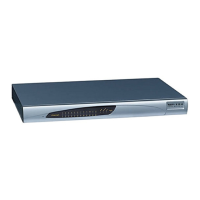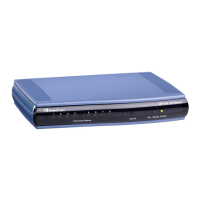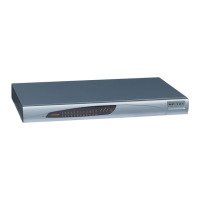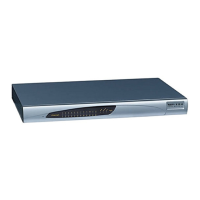6.10 Call Disconnect Parameters
The call disconnect supervision parameters are described in the table below.
Table 6-46: Call Disconnect Parameters
Parameter Description
Web/EMS: Disconnect on Dial Tone
[DisconnectOnDialTone]
Determines whether the device disconnects a call when a
dial tone is detected from the PBX.
[0] Disable = Call is not released.
[1] Enable = Call is released if dial tone is detected on
the device's FXO port (default).
Notes:
This parameter is applicable only to FXO interfaces.
Send Digit Pattern on Connect
This option is in addition to the mechanism that
disconnects a call when either busy or reorder tones
are detected.
Defines a digit pattern to send to the Tel side after a SIP
200 OK is received from the IP side. The digit pattern is a
pre-defined DTMF sequence that is used to indicate an
answer signal (e.g., for billing).
The valid range is 1 to 8 characters.
[TelConnectCode]
Note: This parameter is applicable to FXO
Web: Disconnect on Broken Connection
EMS: Disconnect Calls on Broken
Connection
.
Determines whether the device releases the call if RTP
packets are not received within a user-defined timeout.
[DisconnectOnBrokenConnection]
[0]
No
[1] Yes (default)
The timeout is set by the parameter
BrokenConnectionEventTimeout.
Notes:
This feature is applicable only if the RTP session is
used without Silence Compression. If Silence
Compression is enabled, the device doesn't detect a
broken RTP connection.
During a call, if the source IP address (from where the
RTP packets are sent) is changed without notifying the
device, the device filters these RTP packets. To
overcome this, set DisconnectOnBrokenConnection to
0; the device doesn't detect RTP packets arriving from
the original source IP address and switches (after 300
msec) to the RTP packets arriving from the new source
IP address.

